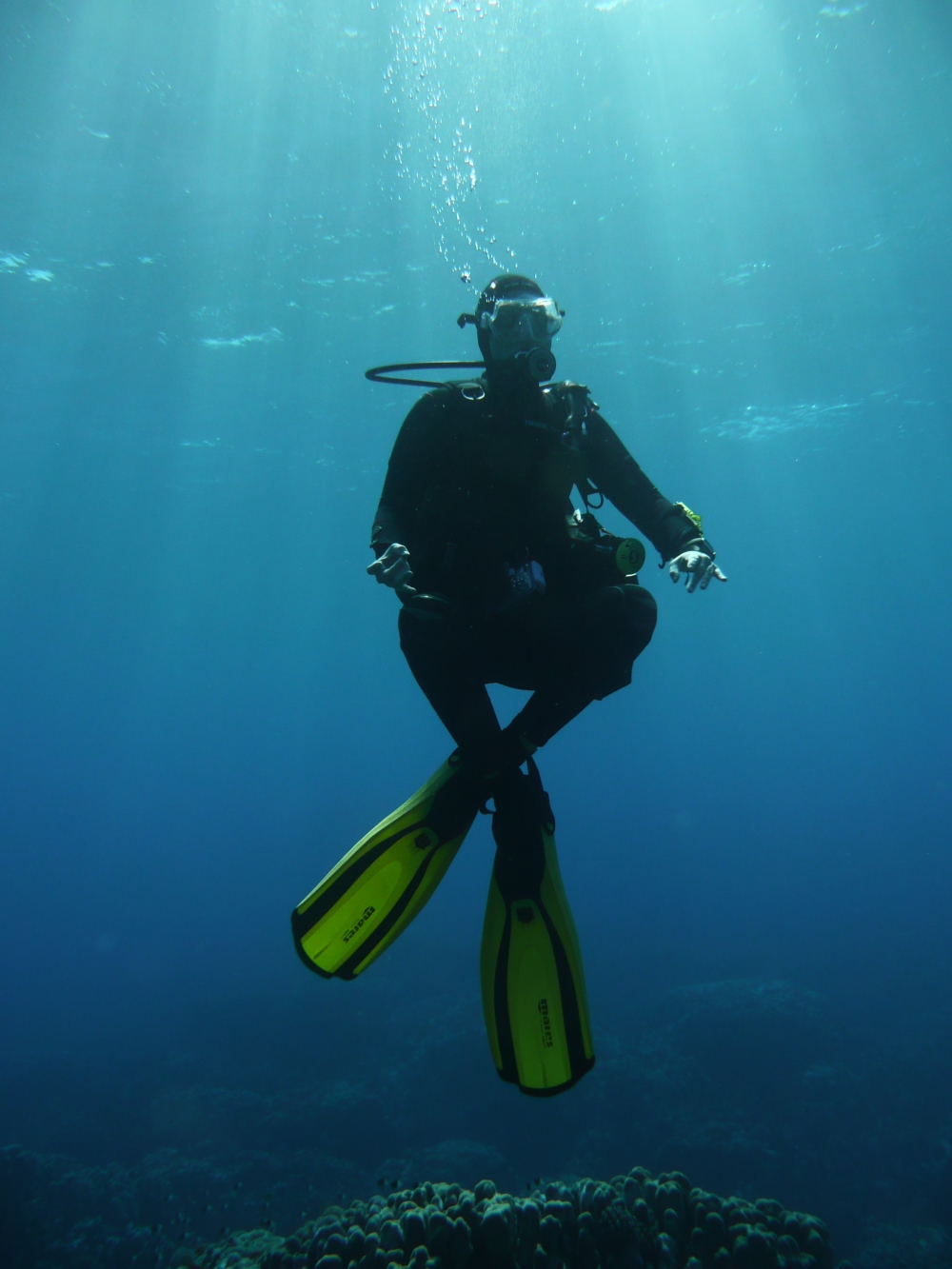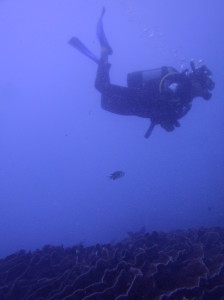10 tips to become the King of Buoyancy
Originally posted at ScubaDiveDestinations.com
Have you ever had those dives where everything was just perfect? Moving through the water was effortless, you felt completely relaxed and every breath took you exactly where you wanted it to? Why do these dives feel so amazing? That’s right: buoyancy! Buoyancy is a skill we learn in our basic diving training, but it’s far from easy – and the only dive skill we will never stop improving. Even for the most experienced diver, these tips can help you to become a true master of buoyancy.
1. Control the mind…
Lots of divers think buoyancy is controlled only with the BCD and the lungs. The BCD regulates the ‘rough’ buoyancy and the lungs are used to fine-tune. While this is true, there is a third one that is overlooked by many and has great influence on your buoyancy: the mind. When you feel stressed or not relaxed on a dive, your buoyancy is always a little off. Trying to lengthen your exhale can help a lot, because you will be able to inhale more fresh air while relaxing yourself in the process. Diving is really quite like meditation…
2. Check…!
Do a quick weight check before each dive – especially when you are using different equipment or dive in a new place. Lots of divers use too much weight and this will make it so much harder to achieve perfect buoyancy. You can watch a nice demonstration of this here.
3. Breathing
Ah, the golden rule in scuba diving… Breathe continuously and never hold your breath. We learn that our breathing pattern should be slow and deep. But what does that mean in practice? It surely doesn’t mean taking very deep, but fast breaths, yet this is what lots of divers do – resulting in rapid air consumption, stressful dives and buoyancy issues. A great way of training your breathing is to practice on land. Make your breathing very slow and count while inhaling and exhaling. Stretch your exhale so it becomes twice as long as your inhale. A few practice rounds on the boat before the dive can make a huge difference. Added bonus: it relaxes you before hitting the water.
4. Slow down
Divers that swim very fast, are usually compensating for weight issues. Recognize this issue? Try, after you descended, to hover horizontally with minimal fin movement and just feel what happens. If you or your fins are sinking, add a little air to the BCD. If you or your fins rise, deflate a little. When you feel that you tend to swim fast during your dive, repeat this trick. The less you move, the better you can feel and adjust your buoyancy. And yes, it does feel clumsy and awkward the first few times, but it will improve your skills a lot!
5. Focus….
The marine life and landscape around you is wonderful and your buddy is very funny, but diving does have its dangers that we need to be aware of at all times. Lots of divers use their safety stop for some last minute funny pictures and to joke around with the group, but don’t realize they are shooting up and down in the process. Or don’t notice how their fins are destroying the coral reef, that will take years and years to recover… So one of the most important tips of this list is: focus (without giving up the fun of course)! Focus on your surroundings, your position in the water and your buoyancy. Next safety stop, do something crazy and try doing a perfect 3 minute Buddha hover. You can even make it into a competition. Great practice!
6. Your best friend: the dump valve
I am honestly in love with my dump valve and I was surprised to learn that so many divers never use theirs. Especially the valve on the bottom of the BCD, on the back, can be a trustworthy pal. It makes the diving so much easier, since you can just lift your buttocks a little, pull the little rope, and down you go. Maybe one or two more puffs into the BCD and there you are: back to perfect buoyancy. Easy, because you can just stay horizontal instead of having to change your position underwater, which of course affects your buoyancy again…
7. Stay horizontal
It happens almost every dive: divers check their air gauge or clear their mask while turning upside down or floating up to the surface. I always teach my students to stay horizontal as much as they can, because until they know how to fine tune their buoyancy, changing positions underwater can result in a considerable change in buoyancy and even runaway ascents. Also, lots and lots of divers tend to be slightly negatively buoyant, which results in their fins sinking. This can be both very annoying for the others in the group as the kicked up sand ruins the visibility, but it can also easily damage the reef. So inflate a little, or check if you can lose a kilo on the next dive. It’s also good practice to keep your fins up a little, by bending your knees. A tec diving course, like GUE Fundamentals, can help you with achieving the perfect position.
8. Play!
My favorite dive to teach is the Peak Performance Buoyancy dive for the PADI Advanced course. It’s amazing to see divers start the dive struggling with their positions and buoyancy and finishing it totally relaxed, horizontal and enlightened. I let them do an obstacle course, swim through hoops, hover in different positions, make 360 turns while staying in the same place and – my favorite – swim backwards. All these playful exercises can teach you so much and they can be done easily in a swimming pool as well.
9. Take pictures
Underwater photography can greatly improve your skills – if you do it well. I’ve seen the worst photographers, literally destroying the reef left and right while chasing a school of fish… Or grabbing hold of the reef to steady their shot. Try to be a reef friendly photographer: don’t wear gloves, stay off the reef and use only your breath to take the perfect shot.
10. Look for small stuff
The one thing that improved my buoyancy above all, is my fascination for the smallest of marine creatures. Crazy colored crabs, shiny little shrimps and – my favorites – weirdly shaped and patterned nudibranchs. Searching for the small stuff means having to come close, stay still and use your breath and fins to make the smallest movements (of course, without touching anything). Great buoyancy practice and a way to impress your buddy with your fantastic finds! Elzemiek Zinkstok
About the Author
Her favorite animal has always been the shark. Sharks are the reason Elzemiek started diving (in a cold lake in the Netherlands) at age 11, why she became a Marine Biologist, Science communicator, PADI diving instructor and free diver. Originally from the Netherlands, Elzemiek worked in marine conservation (saving seals), taught diving on Zanzibar and is now traveling Africa as a ‘professional gypsy’, looking for the next adventure. Nowadays, besides seeing sharks, her biggest joy is finding the smallest, weirdest, most camouflaged marine life – and sharing their existence. Often referred to as the Crazy Biologist, Elzemiek is always looking for partners in crime, as her dream is to one day save the ocean. But she needs help. 🙂 E-mail: [email protected]









